
Transit Briefs: CTA, MARTA, Metro Transit, Metrolinx, SEPTA, Sound Transit, TTC
Written by Marybeth Luczak, Executive Editor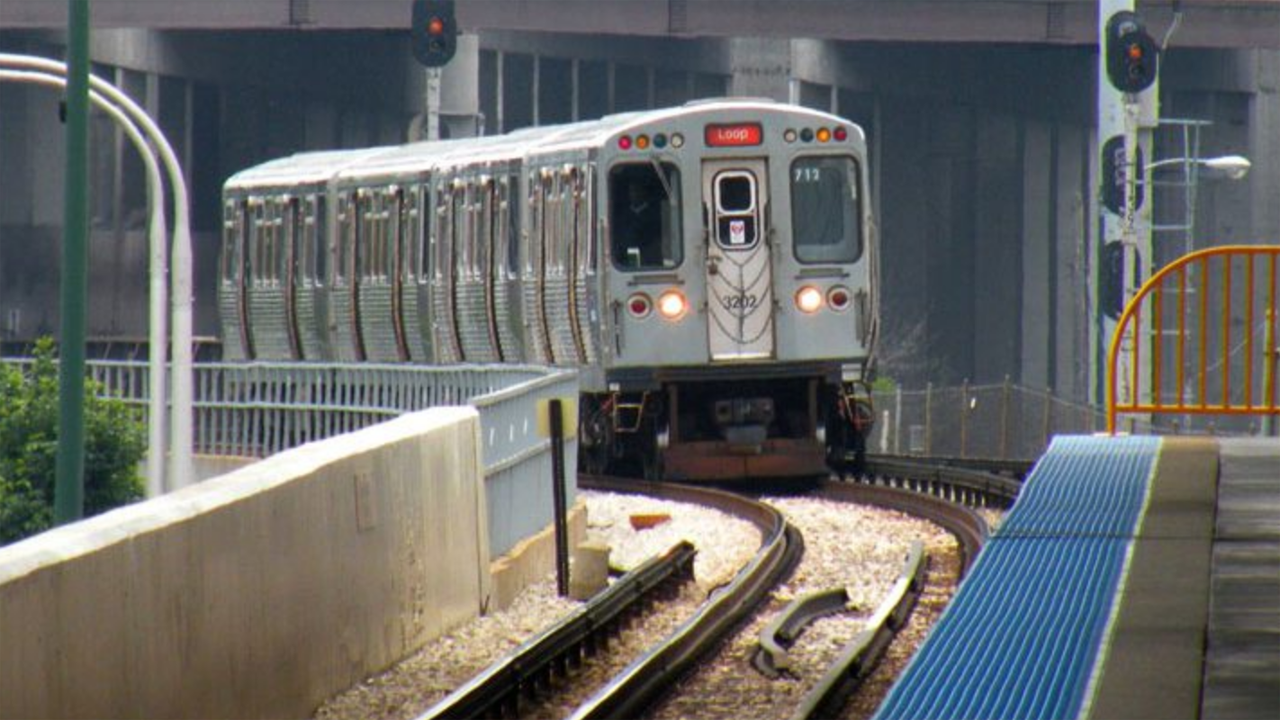
CTA crime was down in July, according to Chicago Police Department (CPD) statistics. (CTA Photograph Courtesy of FTA)
Crime declines at Chicago Transit Authority (CTA). Also, Metropolitan Atlanta Rapid Transit Authority (MARTA) and Metro Transit in St. Louis reach labor agreements; Metrolinx will announce the long-overdue opening of Toronto’s Eglinton Crosstown Light Rail Transit (LRT) line; the Federal Transit Administration (FTA) will review Southeastern Pennsylvania Transportation Authority’s (SEPTA) maintenance and safety protocols; Seattle’s Sound Transit allows riders to track service performance in their neighborhoods; and Toronto Transit Commission (TTC) riders will soon be able to pay fares using Interac® Debit.
CTA
CTA crime was down in July, according to Chicago Police Department (CPD) statistics. Overall transit crime was down 9% year to date and 21% compared with July 2022, and violent crime was down 13% year to date, and 21% month to date (July 2023 vs. July 2022), CTA reported Aug. 10.
The transit agency said it teams with CPD to deter crime on or near its properties and also assists in investigations when a crime occurs. CTA supplements CPD’s efforts with its network of more than 33,000 security cameras; hundreds of personnel deployed across the system each day, who are trained and focused on rider “comfort and safety”; and contracted security guards and K-9 units, who address issues like customer behavior and fare evasion.
“CTA is entrusted with providing more than 900,000 rides every week day, on an average, and it is my priority to ensure the safety of every single rider and employee,” CTA President Dorval R. Carter Jr. said. “We know from the data that instances of crime on the system are rare, and this downward trend reflects the focus we have placed on reducing crime. As we’ve always done, we coordinate daily with CPD to deploy resources most effectively across the CTA system. Those efforts are paying off, but we’re committed to continuing to improve the quality of our customers’ experiences.”
MARTA
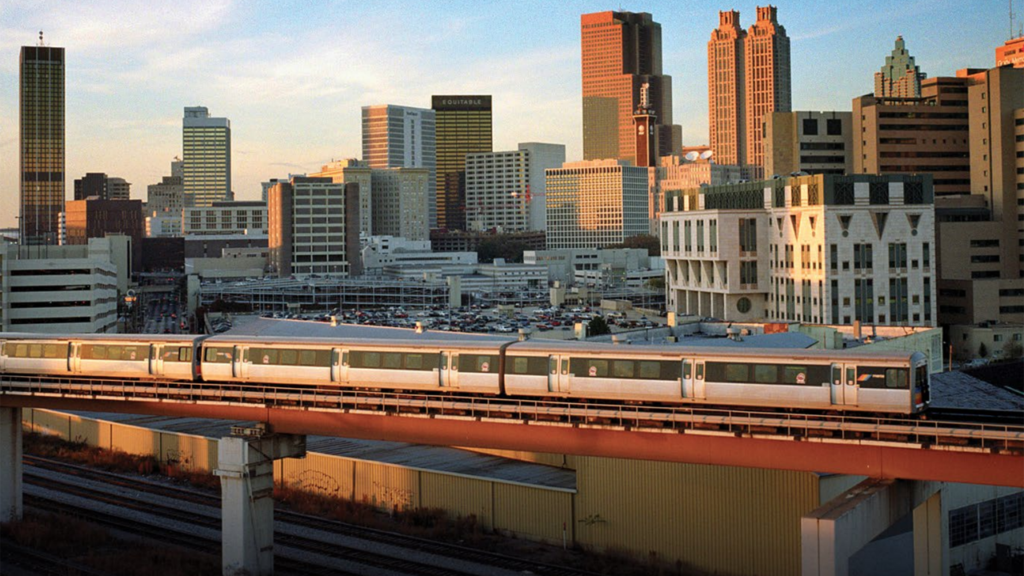
MARTA on Aug. 10 reported reaching a new three-year collective bargaining agreement with the Amalgamated Transit Union (ATU) Local 732. Of MARTA’s 4,275 employees, 2,697 or 63% are ATU Local 732 members.
While the transit authority already covered 83% of employees’ healthcare premiums and offered represented employees a lifetime pension benefit, new benefits included in this contract are paid parental leave, education reimbursement, and longevity and attendance bonuses. The agreement also includes an average 10% raise for operators in the first year, and 3% in the second and third year.
“The contract creates a mutually beneficial situation for both union and management by restructuring the attendance bonus from annual to quarterly,” MARTA said. “This allows employees to take time when needed but incentivizes consistent attendance, which will help minimize missed trips due to high levels of absenteeism.”
Union members will receive an estimated 12 times more in total attendance bonuses over the last contract, and longevity bonuses have been added for members with 15 years of service and increased for those with more than 20 years of service. According to MARTA, members can also share MARTA employee Breeze passes with their spouses and dependents, up to four per represented employee.
“No one is more important to delivering the vision of MARTA, which is people taking people where they want to go today, tomorrow and in the future, than our represented workforce,” MARTA General Manager and CEO Collie Greenwood said. “I feel confident this agreement recognizes the contributions of represented staff and establishes new benefits to support them and their families.”
“As a public entity, MARTA strives to keep pay competitive while remaining fiscally responsible,” MARTA Board of Directors Chair Thomas Worthy said. “The 16% raises and longevity bonuses, plus health benefits provided at the lowest cost of any public employer in metro Atlanta, combine to make a strong compensation package for represented employees.”
Metro Transit
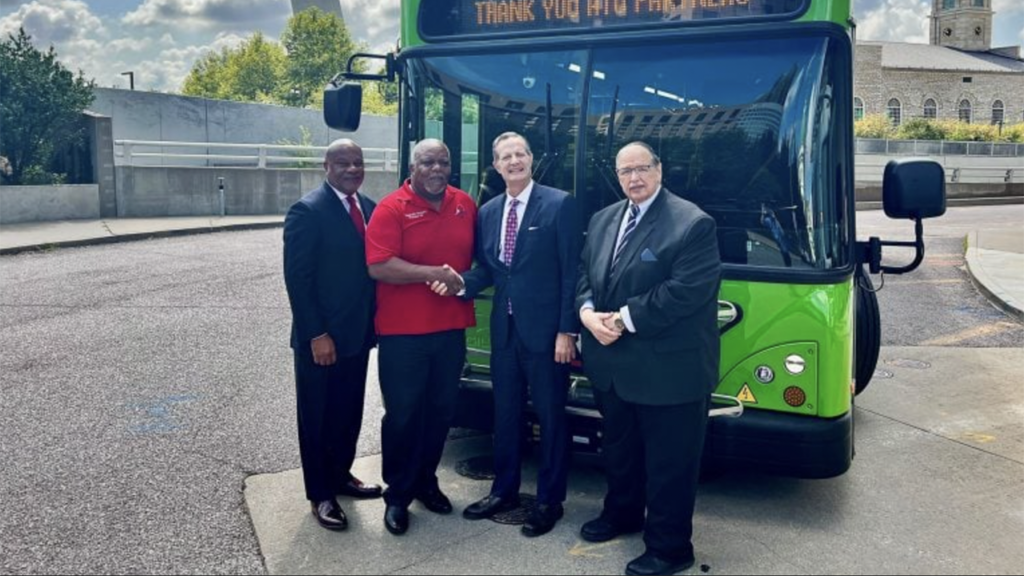
Metro Transit parent company Bi-State Development has approved a new MetroLink and MetroBus operator and maintenance worker contract, plus a new clerical worker contract; all are represented by the ATU Local 788. The three-year contracts are the result of more than a year of negotiations and cover approximately 1,100 employees.
The agreements call for pay increases of 3% this year and 3% next year, with a $7,000 signing bonus. The salary increases are in addition to a 5% increase retroactive to July 1, 2022 that was agreed to last fall, which the transit agency said “set the stage” for contract talks to continue on a longer-term deal. The previous two contracts expired in June 2022.
“The new agreements further stipulate the terms of the ratification [signing] bonus, noting that $3,000 of it can be added to a paycheck or can be placed in a 401k tax-advantaged retirement account, while the remaining $4,000 will go toward a 401k tax-advantaged retirement account set up by Bi-State Development,” Metro Transit said. “The 401k yearly contributions are in addition to the covered members’ regular pension contributions. In addition to base wage increases, the contract offers new pay differentials that could increase pay by up to 7% for qualified employees. Two-thirds of all MetroBus and MetroLink operators currently qualify for at least one pay differential. The advantages spelled out in the Operator and Maintenance contract are part of Metro’s initiative to provide a competitive wage and benefit package that significantly increases operator take-home pay and accelerates the steps and progression to top salary.”
“Our frontline employees and their negotiating team with ATU Local 788 worked tirelessly for these contracts, and we are very grateful they have now been ratified by both the members and the full Bi-State Development Board of Commissioners,” said Taulby Roach, President and CEO of Bi-State Development.
“I would like to thank the members of ATU Local 788, my ATU negotiating team and Metro for working with us after a long struggle in getting this contract across the finish line,” said Reginald M. Howard, ATU Local 788 President BA.
“The ATU Local 788 negotiating team put a considerable amount of time and effort into working with us on these contracts, and we are pleased with the outcome of those negotiations that will strengthen our ability to retain and attract the best team members possible to safely serve our customers with higher quality service,” Metro Transit Chief Operating Officer Chuck Stewart said. “We value the hard work our team members deliver every day to serve this community and look forward to working together under the new agreements so we can put the focus back on our customers who rely on public transit.”
Metrolinx
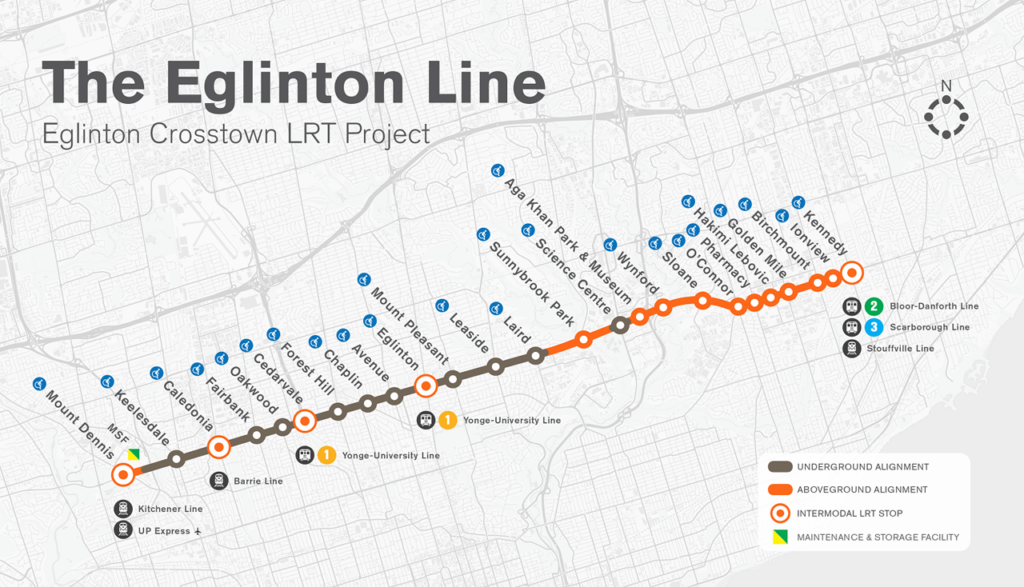
The “tentative opening date” for Eglinton Crosstown LRT—the Toronto Transit Commission’s (TTC) future Line 5—is expected to be announced by the end of this summer, according to CP24, a Toronto, Canada-based news and media company.
“(I’m) keen to give you by the end of the summer a clear indication of when that Line 5 would be in service,” Metrolinx President and CEO Phil Verster said during “an unrelated news conference,” reported CP24. The C$5.5 billion project was originally scheduled to launch in 2020. Construction began in 2011 and is now 98% complete, reported MPP Stan Cho, Ontario’s Associate Minister of Transportation who was also at the news conference, according to CP24.
The project “has been plagued with issues, including the COVID-19 pandemic and supply chain problems, leading to its opening date being pushed back several times,” according to the media outlet. “Earlier this year, there was more uncertainty on when the line would open to the public after more than 200 quality control issues, including improperly laid tracks, were discovered. As recently as May, it was reported that the Crosstown won’t be operational until next year.”
According to CP24, Verster said a “range of dates” rather than an exact launch date will be provided since the line is still in the “testing and commissioning” phase. Metrolinx and TTC have approved the start of operator training, and the earlier quality issues have been “remedied to our satisfaction,” the media outlet reported Verster as saying.
Stan Cho said that the “priority now is about making sure this is safe to operate,” according to CP24. “You don’t want to rush and open a line. We see what happens with the example of what’s happened in Ottawa with the derailment of the light rail there. People have suffered long enough waiting for this Crosstown to be completed. We were going to open when it’s safe to do so.”
SEPTA
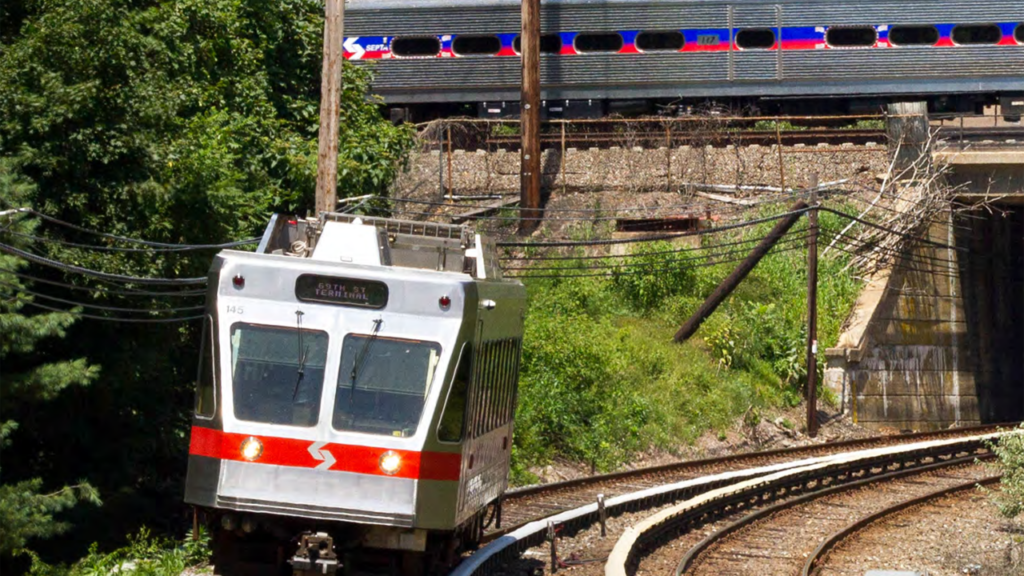
The FTA will review SEPTA’s maintenance and safety protocols following “recent bus and trolley crashes that killed one person and injured at least 40,” according to The Philadelphia Inquirer. Additionally, the transit authority on Aug. 14 will start “safety reinforcement” training for all employees.
In the past 20 days, there have been eight “major collisions involving SEPTA vehicles,” the newspaper reported Aug. 10. One was a July 27 “runaway trolley crash” that the National Transportation Safety Board is investigating. “An out-of-service SEPTA trolley with a mechanic aboard rolled out of a rail yard, struck an SUV, and then smashed into the ground floor of a historic home in Southwest Philadelphia,” according to the paper.
FTA disclosed its review of SEPTA on Aug. 10 “in a letter obtained by The Inquirer and addressed to SEPTA General Manager and CEO Leslie S. Richards and state Transportation Secretary Michael Carroll,” whose agency, PennDOT, oversees rail transit operations in the commonwealth, according to the newspaper. “Top FTA officials have spoken with Richards and other SEPTA executives about the series of major collisions, including five within a single week in late July, the letter said.
“‘To date, however, SEPTA has not taken effective actions to prevent and address continuing safety conditions,’ according to the letter, which was signed by Joseph P. DeLorenzo, the FTA’s associate administrator and chief safety officer.”
While FTA noted that SEPTA is working to improve safety, it is conducting the review “‘due to the gravity of the situation’ and at the request of the agency’s administrator, Nuria Fernandez, the letter said,” according to The Inquirer. “The inspection of maintenance and safety protocols will inform steps to build a ‘robust safety culture’ at SEPTA, DeLorenzo wrote.”
According to the newspaper, FTA in March “urged PennDot to sharpen its oversight of SEPTA, expressing concern about several ‘safety events’ in late December 2022 and February of this year, including a trolley collision with a bus in West Philadelphia; two trolleys colliding at Elmwood Yard; a runaway train at Bridge Street Yard; and a collision between trains at the Fern Rock Carhouse.”
Regarding SEPTA’s new safety training, The Inquirer reported that all employees will be trained over approximately eight weeks. Leslie Richards said in a statement to the paper: “The safety of our customers and employees is always our top priority, and we are redoubling our efforts. The recent series of accidents has caused us to look internally with a critical eye to ensure we embrace safety as a core value every day.”
FTA’s safety investigation at SEPTA follows its June 2022 launch of a safety investigation at Massachusetts Bay Transportation Authority (MBTA). The federal agency is using authority granted years ago by MAP-21 (Moving Ahead for Progress in the 21st Century Act), according to Railway Age Contributing Editor David Peter Alan.
In his report, Second FTA Safety Probe Targets MBTA, Alan wrote: “The FTA announced its new authority on Oct. 27, 2015: ‘Since 1964 the Federal Transit Administration (FTA), the agency that administers federal assistance for the nation’s transit systems, had been prohibited by law from exercising safety authority over those very systems. This gap in federal authority led to a very confusing patchwork of transit safety standards and oversight from state to state … MAP-21 now grants FTA the authority to establish and enforce a new comprehensive national transit safety and oversight framework. The law requires, among other things, that FTA develop a National Public Transportation Safety Plan and update the State Safety Oversight (SSO) Program to ensure that rail transit systems are meeting basic, common-sense safety requirements. The law also includes important new safety provisions for all public transit operators.’ The FTA also announced at the time that it could now direct transit agencies to follow recommendations from the National Transportation Safety Board (NTSB), that the safety program would concentrate on rail, and that the FTA would now fund state safety oversight authorities.”
“The FTA is working with the states to exercise its authority over safety on rail transit with the SSO program,” Alan wrote. “A post of the FTA website from Dec. 17, 2021 explained the program this way: ‘The purpose of the State Safety Oversight program is to oversee safety at rail transit systems. The SSO program is administered by eligible states with rail transit systems in their jurisdiction. FTA provides federal funds through the SSO Formula Grant Program for eligible states to develop or carry out their SSO programs.’ The Final Rule, which takes up 33 pages in the Federal Register, can be found at https://www.govinfo.gov/content/pkg/FR-2016-03-16/pdf/2016-05489.pdf. The program includes SSO certification, accident notification procedures, training and refresher courses, and formula grants.
“The FTA’s first safety inspection and findings concerned WMATA’s Metrorail system in Washington, D.C. and the neighboring states of Maryland and Virginia. According to a statement posted on the FTA website on June 17, 2015, the agency was implementing recommendations from the NTSB concerning deficiencies in tunnel safety on the Metrorail system. The post said: ‘FTA found serious safety lapses in Metrorail’s Rail Operations Control Center, which schedules and conducts maintenance work, manages abnormal and emergency events, and ensures the safety of trains and personnel on the right-of-way. In key areas, WMATA is not effectively balancing safety-critical operations and maintenance activities with the demand for passenger service.’
“The agency issued a safety directive with steps required to correct the deficiencies, and explained its action this way: ‘FTA conducted the Safety Management Inspection (SMI) as part of its new safety authority established by MAP-21 in 2012. The SMI evaluated WMATA’s operations and maintenance programs, safety management capabilities, and organizational structures to assess compliance with its own procedures and rules, existing federal regulations and FTA Safety Advisories to ensure safety for its passengers, employees and system infrastructure. The SMI report includes 54 safety findings: 44 for Metrorail and 10 for Metrobus.’
“On March 18, 2019, the FTA transferred safety oversight authority to the newly-formed Washington Metrorail Safety Commission (WMSC), a new local authority created by Congress in 2017 and consisting of members from the three jurisdictions served by Metrorail. During the time it had direct oversight authority, the FTA issued nine safety directives (later called ‘Special Directives’), seven Safety Oversight Reports and Audits, and 12 SafeTrack Project Management Oversight Reports concerning the Metrorail system. WMSC acted in a manner similar to the SSO agencies, through an agreement among the District of Columbia, Maryland and Virginia that was later ratified by Congress.”
For more on the MBTA safety probe, read:
FTA Rejects MBTA Safety Improvement Plan
NTSB: Short Circuit Probable Cause of MBTA Passenger Fatality
Sound Transit
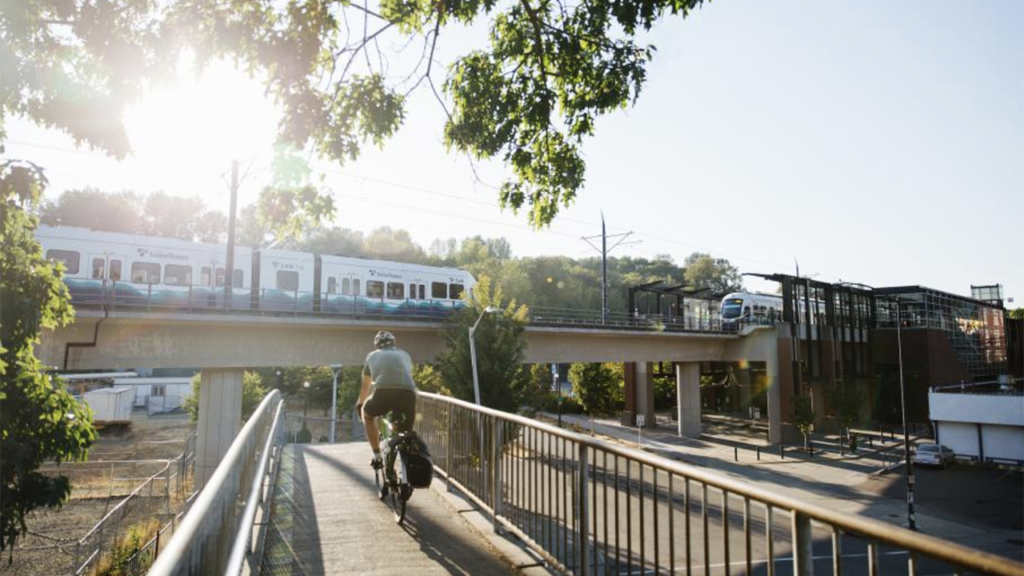
Sound Transit customers can explore ridership numbers, on-time performance metrics, and elevator and escalator availability on routes and stations in their local areas. The transit agency’s online System Performance Tracker now includes “Service in your neighborhood” functionality. Riders can choose from a menu of 49 different communities across the Sound Transit district, or use the map tools to zoom in on a given area.
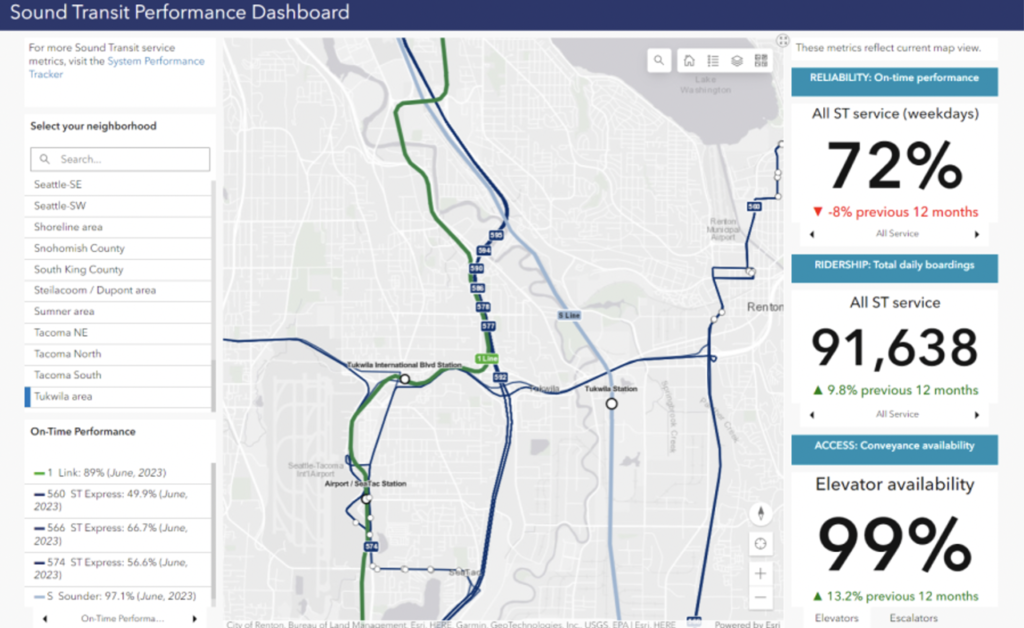
To the right of the map (see example above), customers will automatically see overall ridership, reliability and access metrics for their selected area. They can also click right or left within each section to see ridership and reliability broken down by transit mode, and elevator vs. escalator performance. These sections also show performance trends over the past 12 months.
In the section at bottom left of the map, customers can drill down even further to find data on the specific bus and rail routes within their selected area.
“We know how valuable clear performance data can be for our passengers,” Sound Transit said. “The new ‘Service in your neighborhood’ tool is just one way we’re working to better share information.”
TTC
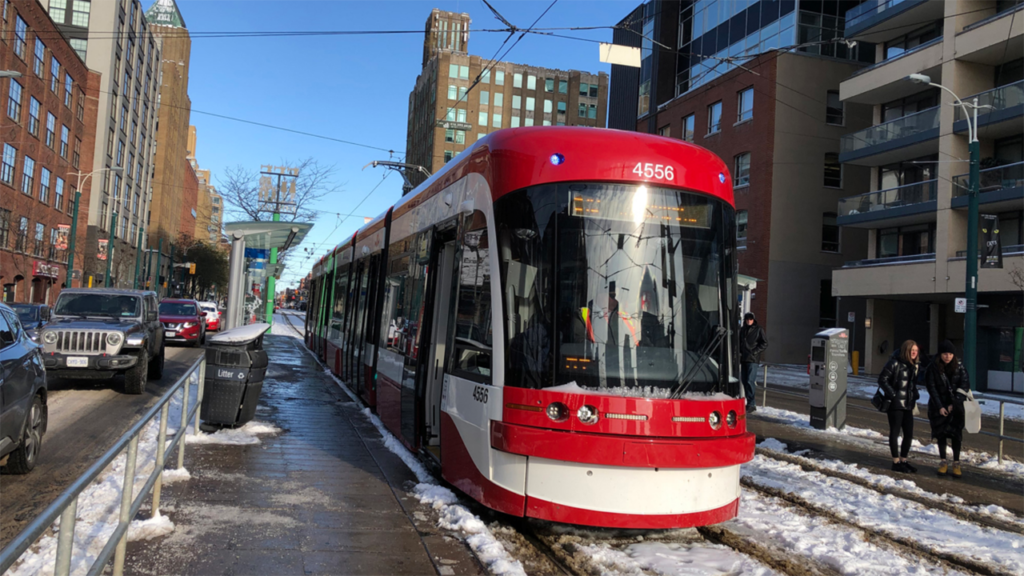
Starting Aug. 15, Interac® Debit will be available as a contactless payment option for adult fares across the TTC network. Riders will also be able to pay adult transit fares directly by using a debit card loaded in their participating mobile wallet on their smartphones or smartwatches.
In May, Interac Debit became available as a contactless payment option on nine transit agencies across the PRESTO fare system. Interac Debit is also available on TransLink, Société de transport de Laval (STL), Fredericton Transit and Lethbridge Transit.
“We are thrilled to offer expanded payment options on the TTC,” said TTC CEO Rick Leary. “The addition of contactless payment via Interac Debit for adult fares on all TTC buses, streetcars and at fare gates, gives customers more choice and convenience when they travel. Tapping on with a debit or credit card is a feature we know our customers want and will help make their commutes easier.”
“Our government is working with our municipal partners to make it easier and more convenient for transit riders to get from point A to point B,” said Caroline Mulroney, Ontario Minister of Transportation. “We are continuing to improve PRESTO services by introducing new and innovative payment options that make fare payments easier.”



